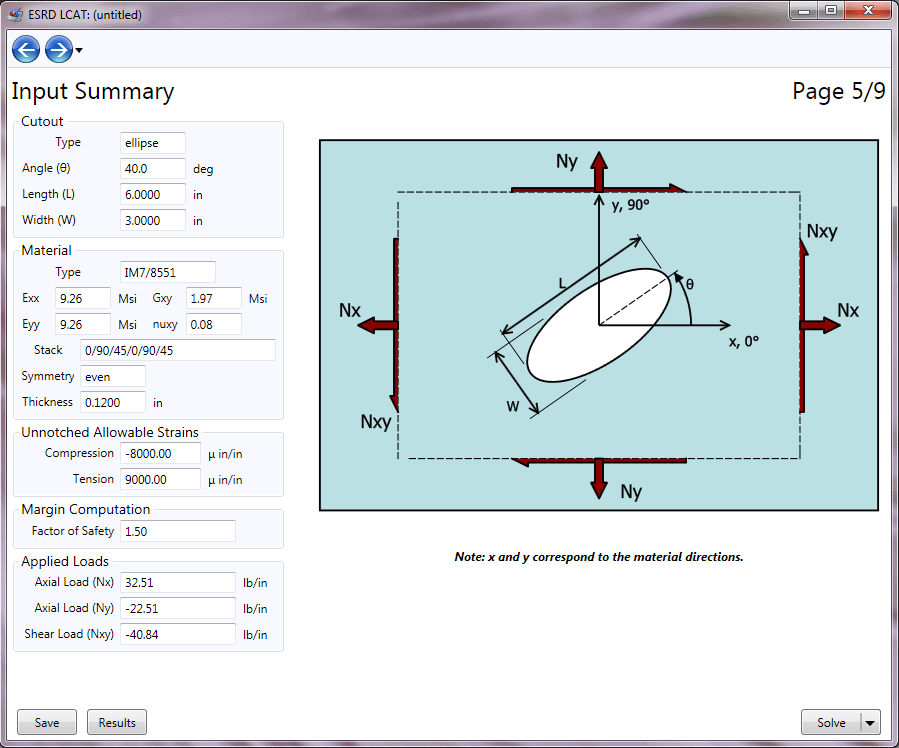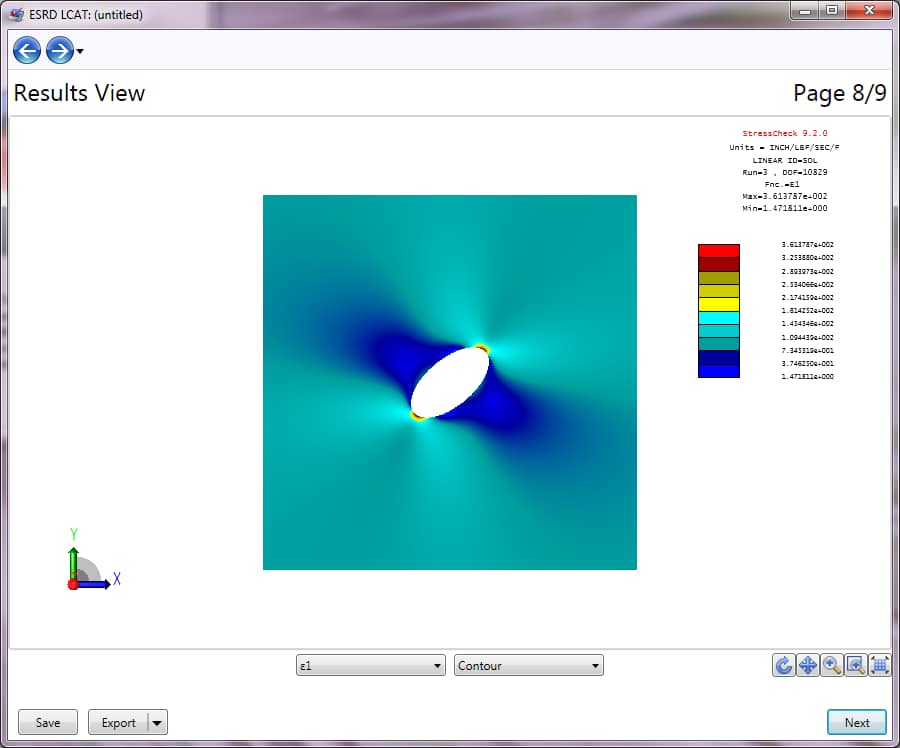The Laminate Cutout Analysis Tool (LCAT) is a Smart Engineering Simulation App providing a means to compute the strain distribution around a circular, elliptical, or racetrack cutout in a composite plate subjected to biaxial and shear loading. Additionally, LCAT determines the margin of safety for strain and the orthotropic strain concentration factor.
Laminate Cutout Analysis Tool

From the simple and intuitive interface, LCAT automatically builds, solves, and post-processes a Planar StressCheck finite element mesh of the desired laminated cutout shape/orientation and provides solution verification feedback.
Key Features and Advantages

- Solutions obtained with StressCheck, verified by p-extension.
- Built-in Results Viewer provides dynamic viewing of the FE mesh, the strain fringe contours and the strain directions.
- Supports US and SI units.
- Modeling approach validated with experimental results.
- Automatic computation of the laminate properties using CLPT given the lamina material and stacking sequence.
- The strain distribution around a cutout in the laminate composite being prepared for a repair.
- Margin of Safety calculation for the unrepaired cutout before sizing the repair patch.
- A simple and intuitive user interface allows input engineering data in pre-defined templates with step by step validation feedback.

Looking for Resources?
Recent News & Events
Quick Links
Testimonials
-
“As frequent StressCheck users we rely on the capabilities and reliability of the program to complete our everyday jobs ensuring safe reliable flights of our aircraft. The layout of the program and documentation allow for a quick learning process and the support ESRD offers is second to none. They take the time to answer the most basic questions as well as working through complex problems to ensure the proper validation of results. The effort they make in satisfying their users needs increase the reliability, functionality, and capability of this great program.”
USAF Engineer
Hill Air Force Base
 Serving the Numerical Simulation community since 1989
Serving the Numerical Simulation community since 1989 





